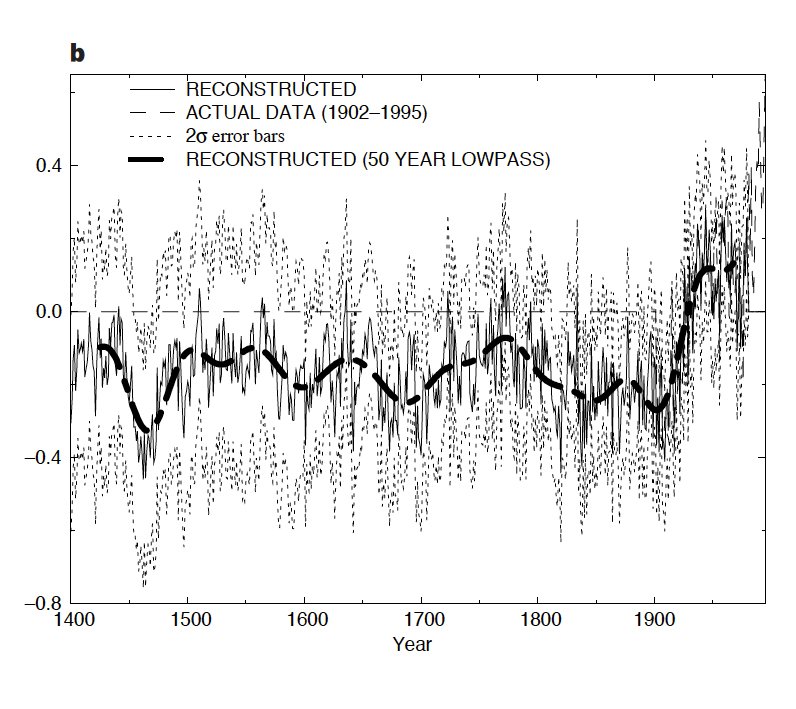Two decades ago this week, Michael Mann and a group of researchers published this graph, now dubbed “the hockey stick.” It changed the world, or at least it still could.
It’s the graph that showed for the first time that the earth’s temperature spiked during the Industrial Age.
It was a simple piece of information.
“There is something unprecedented about the warming we are experiencing today and, by implication, it has something to do with us and our profligate burning of fossil fuels,” he said.
Writing on Scientific American today, Mann says he never expected what would happen next.
As the Serengeti strategy has been deployed against me, I have been vilified on the editorial pages of The Wall Street Journal and other conservative media outlets, and subject to inquisitions by fossil fuel industry–funded senators, congressmen and attorneys general. My e-mails have been stolen, cherry-picked, taken out of context and broadcast widely in an effort to embarrass and discredit me. I have been subject to vexatious, open-records law requests by fossil fuel industry–funded front groups for my personal e-mails and numerous other documents. I have experienced multiple death threats and have endured threats against my family members. All because of the inconvenience my scientific findings posed to powerful and influential special interests.
And yet, study after study has reaffirmed his team’s findings. In fact, the most recent Intergovernmental Panel on Climate Change report shows the recent warming is unprecedented over an even longer period of time.
The special interests — oil companies and their politician protectors — are still at it, he says.
Their preferred tactic is to exaggerate the uncertainty in models that project where climate change is heading and argue such uncertainty is a cause for inaction, when precisely the opposite is the case. Arctic sea ice is disappearing faster than the climate models have predicted. The Greenland and Antarctic ice sheets appear prone to collapse sooner than we previously thought—and with that, estimates of the sea level rise we could see by the end of this century have doubled from previous estimates of about three feet to more than six feet. If anything, climate model projections have proved overly conservative; they are certainly not an exaggeration.
Scientists are finding other examples as well. In part as a result of our own work three years ago, there is an emerging consensus—as publicized in recent news accounts—that the “conveyor belt” of ocean circulation may be weakening sooner than we expected. The conveyor delivers warm waters from the tropics to the higher latitudes of the North Atlantic, supporting vibrant fish communities there and moderating climates in western Europe and eastern North America. The earlier melt of Greenland ice, it appears, is freshening the surface waters of the subpolar North Atlantic, inhibiting the sinking of cold, salty water that helps drive the conveyor.
As Earth Day approaches on Sunday, Mann has released another urgent call for action because things are worse than he thought.

